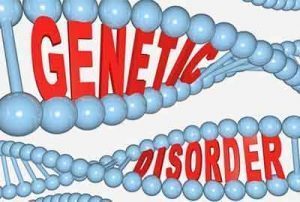- Home
- Editorial
- News
- Practice Guidelines
- Anesthesiology Guidelines
- Cancer Guidelines
- Cardiac Sciences Guidelines
- Critical Care Guidelines
- Dentistry Guidelines
- Dermatology Guidelines
- Diabetes and Endo Guidelines
- Diagnostics Guidelines
- ENT Guidelines
- Featured Practice Guidelines
- Gastroenterology Guidelines
- Geriatrics Guidelines
- Medicine Guidelines
- Nephrology Guidelines
- Neurosciences Guidelines
- Obs and Gynae Guidelines
- Ophthalmology Guidelines
- Orthopaedics Guidelines
- Paediatrics Guidelines
- Psychiatry Guidelines
- Pulmonology Guidelines
- Radiology Guidelines
- Surgery Guidelines
- Urology Guidelines
New drug nusinersen found effective in children with spinal muscular atrophy

A new medication nusinersen has been found effective in children with spinal muscular atrophy.When treated with it children with later-onset spinal muscular atrophy (SMA) show gains in motor function .The study has been published in the New England Journal of Medicine.
"This treatment is transformative for the entire SMA community," said Richard S. Finkel, M.D., the chief of neurology at Nemours Children's Hospital in Orlando and the senior author of the study. "One thing we have learned, though, is that the closer to symptom onset that children begin treatment, the more substantial the improvement in motor function. However, even with delayed use, we observed significant improvements in older children with SMA on nusinersen."
SMA is classified based on the age at symptom onset, as well as the most advanced motor milestone attained during development. Past studies have evaluated the safety of nusinersen in SMA Type 1, the most severe form that affects infants, usually before six months of age and who do not achieve sitting. Children with SMA Type 2 experience symptoms after six months of age and attain sitting before experiencing the muscle weakness and decline in motor function that are hallmarks of this genetic disease.
Before nusinersen, no targeted drug treatments were available for SMA. This treatment modifies the SMN2 gene with an antisense oligonucleotide (ASO), a tiny fragment of synthetic DNA, injected directly into the spinal fluid. The DNA gets absorbed into nerve cells of the spinal cord to increase production of a protein required for neuromotor development.
The researchers noted greater improvements in a motor function score in children treated with nusinersen for at least six months. In total, 57 percent of children in the nusinersen group had an increase of at least three points in functioning scores from the start of the trial to the end of the examination period, compared with 26 percent of patients in the control group that achieved the same level improvement.
The study, known as the CHERISH trial, enrolled 126 children ages 2 to 12 with SMA Type 2 in a multicenter, randomized, double-blind, sham-controlled study from November 2014 through February 2017 to determine the safety and efficacy of the drug in these older patients. Children were administered four doses over nine months, followed by a six-month examination period, before being invited to participated in an open-label extension study.
There are some limitations to the study, including the strict eligibility criteria, which enrolled a more homogeneous and younger group of patients than those in clinical practice. Participants were required to be able to sit independently at the start of the study, with no severe contractures or scoliosis, limited ventilation support, and no use of a gastric feeding tube.
The availability of an effective treatment has led Dr. Finkel and colleagues to spearhead efforts to have SMA included in the Health Resources and Services Administration's Recommended Uniform Screening Panel, a newborn screening panel of conditions that warrant immediate identification after birth. The panel has recently approved this recommendation and is awaiting signature by the head of Health and Human Services. If included, infants with SMA could be diagnosed routinely and treated before symptoms appear.

Disclaimer: This site is primarily intended for healthcare professionals. Any content/information on this website does not replace the advice of medical and/or health professionals and should not be construed as medical/diagnostic advice/endorsement or prescription. Use of this site is subject to our terms of use, privacy policy, advertisement policy. © 2020 Minerva Medical Treatment Pvt Ltd